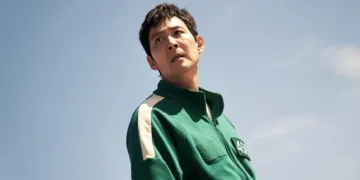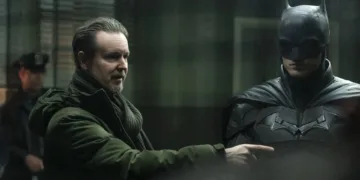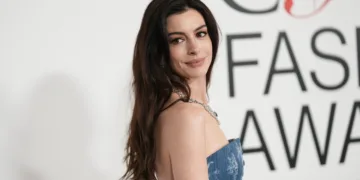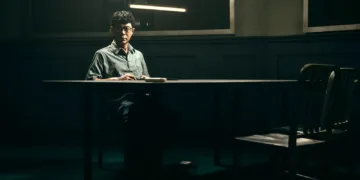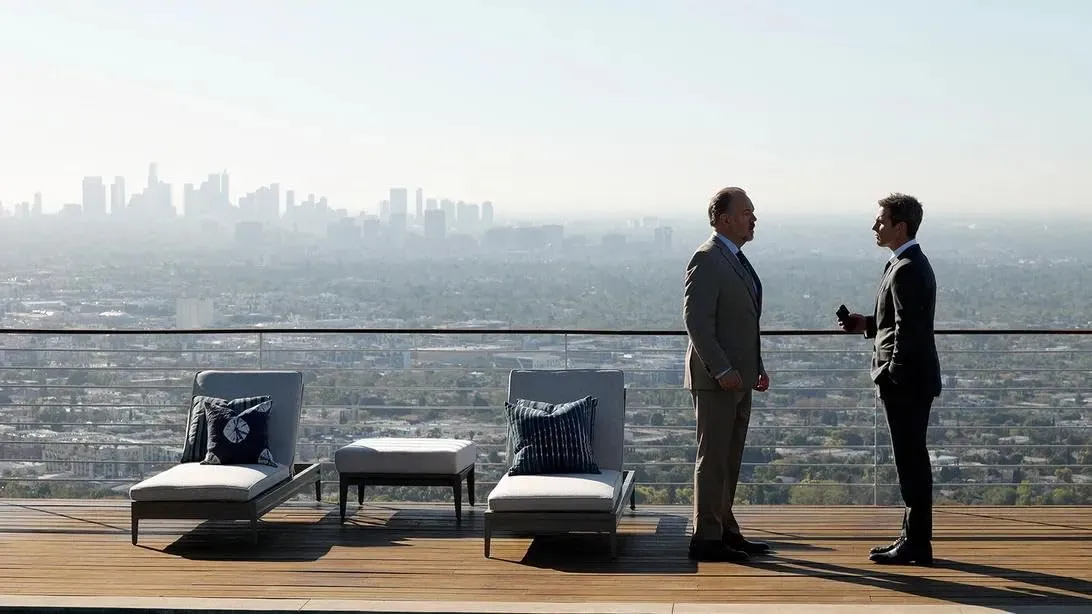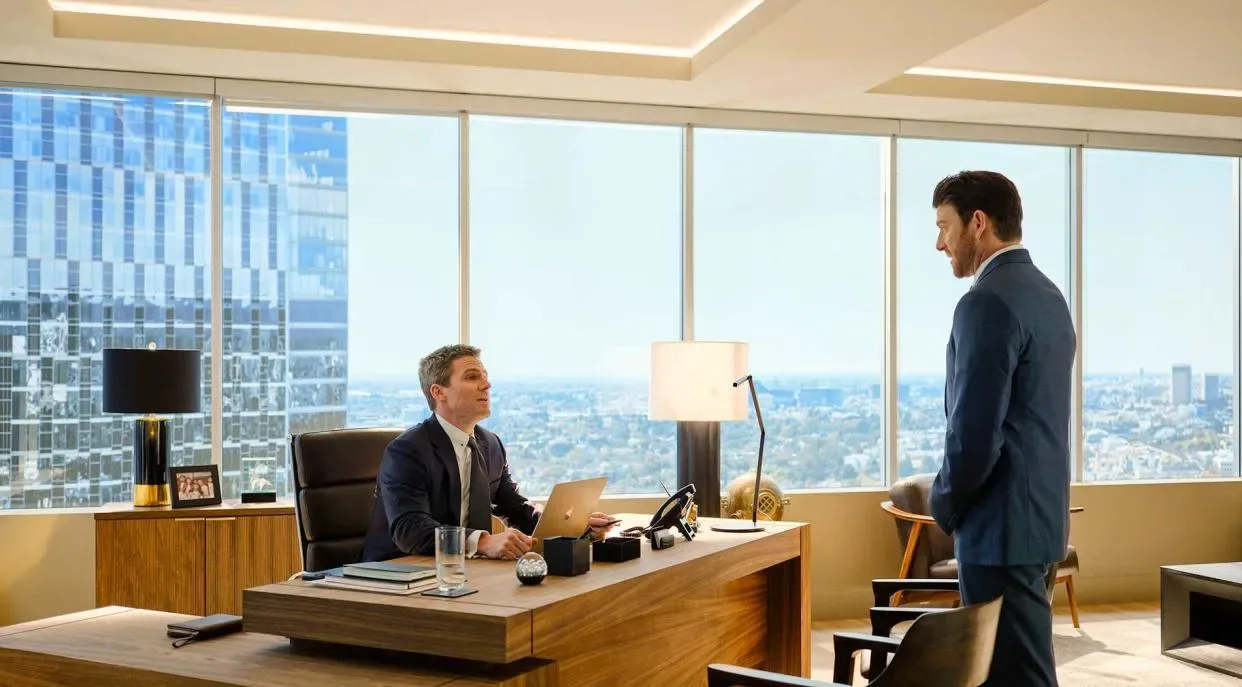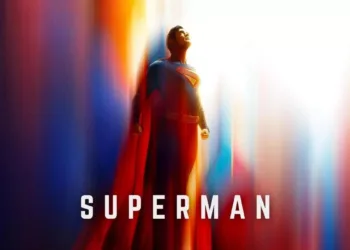Suits LA emerges as a legal drama spin-off that reinterprets a well-known series by shifting its legal arena from the traditional setting of New York’s corporate corridors to the bustling milieu of Los Angeles, where entertainment law takes center stage.
The narrative centers on a new lead, a former federal prosecutor whose journey is marked by personal trials and professional dilemmas. His character carries echoes of his predecessor, yet he stands on his own as the driving force behind a firm that tackles high-profile cases tied to Hollywood’s dynamic environment.
The Los Angeles backdrop plays a significant role in shaping the show’s atmosphere. The city, with its intricate web of film and television production, contributes to a distinct tone that contrasts sharply with the earlier series’ focus on corporate machinations. Cases involving prominent industry figures and media moguls are interwoven into the legal proceedings, offering a fresh set of challenges for the protagonists.
The program’s launch on a major network speaks to a strategy aimed at capturing viewers who appreciate innovative storytelling and diverse perspectives in legal narratives. The interplay between familiar legal drama elements and the creative pressures of the entertainment industry marks Suits LA as a noteworthy effort in contemporary television storytelling.
Narrative Mechanics and Story Arcs
Ted Black faces a series of challenges that drive the plot of Suits LA. The central storyline follows his struggle to stabilize his firm amid a high-stakes merger, setting the stage for a legal battle filled with personal dilemmas and institutional conflicts. His character confronts legal puzzles and ethical quandaries that are interwoven with a crisis at work, where high-profile cases merge with intense business decisions.
A series of flashbacks gradually unveils hidden chapters from his past, offering glimpses of formative experiences that have shaped his professional conduct and personal vulnerabilities. This unfolding narrative is interspersed with legal conundrums that reflect a modern take on entertainment law—a subject rarely tackled with such ambition on television.
The structure of the show incorporates weekly cases that mirror issues within the entertainment sector, highlighting controversies and internal power struggles. Each episode introduces a new legal scenario tied to Hollywood’s complex dynamics, adding layers to the main story. Secondary plotlines examine office conflicts, career ambitions, and familial bonds, enriching the overall narrative texture.
These episodes are punctuated by non-linear storytelling, where brief returns to earlier events allow viewers to see the origins of current conflicts. The pacing shifts between tightly scripted courtroom confrontations and slower, character-focused moments that expose personal dilemmas.
This interplay of long-term narrative arcs and episodic cases provides a window into how legal issues in the entertainment industry are addressed within the framework of modern storytelling. The show’s narrative approach invites viewers to observe not just the legal battles at hand, but also the personal transformations of its characters—a reflection of shifting societal values and the evolving demands of a streaming audience.
Character Dynamics and Performances
Ted Black emerges as a figure whose past as a federal prosecutor shapes his approach to law in the realm of Hollywood disputes. His transition to an entertainment lawyer reveals a man with deep-seated personal struggles that echo through his professional decisions.
His family history, marked by early rejections and unresolved issues, manifests in both his courtroom poise and private moments of vulnerability. Black’s presence on screen blends the stern assurance of legal expertise with moments that expose the human cost of his ambition, creating a character that is complex and layered.
The supporting cast contributes substantially to the show’s texture. Erica Rollins portrays a driven professional whose ambitions are sharpened by the pressures of working in a high-stakes firm. Her interactions with Ted highlight a competitive spirit that occasionally borders on conflict, yet they also uncover pockets of genuine respect.
Rick Dodson, whose career is marked by a desire for recognition, fuels the narrative with his own professional and personal rivalries, generating a tension that spills over into the firm’s dynamic. Stuart Lane, a long-time confidant of Ted, brings a perspective that is both grounded and critical, adding depth to the firm’s internal politics.
The interplay among these characters reveals a series of power struggles and moments of unexpected camaraderie. Office disputes and moments of shared vulnerability provide insights into how personal motivations are interlaced with professional aspirations.
The ensemble cast, through well-calibrated performances, constructs a panorama of interpersonal relations where ambition meets personal history in subtle, sometimes ironic ways. These portrayals invite viewers to question how personal identity influences decisions within a high-pressure legal environment and reflect broader shifts in how modern dramas present multifaceted human experiences.
Thematic Depth and Visual Storytelling
Suits LA explores the tension between duty and personal history, placing trust, legacy, and the quest for fairness at the heart of its narrative. The show portrays a world where the weight of past decisions and personal connections directly shapes professional choices.
Ted Black’s internal struggles, set against the backdrop of a high-profile legal firm in Hollywood, illustrate how the pressures of his lineage and mentorship relationships mold his actions. These character conflicts reveal the often overlooked influence of personal trials on professional integrity, offering a commentary on how individual stories are interlaced with larger institutional challenges.
The narrative employs flashbacks to gradually unfold the layers of its characters, a choice that adds a measured pace and complexity to the story. These glimpses into the past serve not only to build suspense but also to cast new light on current legal and personal dilemmas. The dialogue is carefully constructed, balancing precise legal language with moments that are more conversational and accessible. At times, the repartee carries a subtle wit that hints at the absurdities within the entertainment law world—a nod to the industry’s occasional self-contradictions.
Visually, the show is notable for its contrast between the sleek environments of a high-powered legal firm and the often raw realities behind the glitz of Hollywood. The careful staging of scenes contributes to a dynamic tone, oscillating between moments of tight, deliberate tension and lighter, almost offhand exchanges among colleagues. Such an approach not only maintains viewer interest but also serves as a reminder that even in the most calculated settings, personal imperatives and societal pressures are never far away.
Cinematic Craft and Production Techniques
The production values of Suits LA reveal a deliberate commitment to a polished visual narrative that reflects contemporary storytelling trends. The lighting and camera work underscore an attention to detail, where each scene is carefully framed to capture both the allure of Los Angeles and the gravity of legal conflict.
Set design plays a key role in establishing the show’s atmosphere; lavish offices and modern courtrooms contrast sharply with intimate, personal spaces, creating a layered backdrop that supports the narrative. The portrayal of Los Angeles is more than a mere setting—it actively shapes the show’s identity by echoing the city’s dual nature: glamorous yet gritty.
Costume design contributes significantly to the visual language of the series. Outfits are meticulously chosen to project professionalism while hinting at individual character arcs. Attire not only adheres to the expectations of a legal drama but also reflects subtle shifts in cultural representation, suggesting that traditional legal aesthetics can coexist with contemporary, diverse influences. This careful curation of visual elements offers a refreshing take on an established genre, aligning with emerging trends on streaming platforms that favor high production quality and innovative design.
Sound design and musical scoring further enhance the viewing experience. A carefully curated score punctuates moments of tension, while ambient sounds reinforce the pulse of the bustling entertainment industry.
The director’s approach to pacing in the early episodes is noteworthy; scenes are choreographed with precision, using modern production techniques that blend seamlessly with the tried-and-true elements of courtroom drama. The result is a production that is both visually and aurally engaging, capable of heightening narrative beats and inviting viewers to absorb multiple layers of meaning—a reflection of the shifting dynamics in global media storytelling.
Charting a New Course
Suits LA carries a narrative approach that offers a respectful nod to its predecessor while venturing into distinct territory. The series establishes a framework where legal cases intertwine with personal struggles, allowing characters to develop in ways that mirror current cultural debates.
Ted Black’s path reveals complexities that mirror shifting societal priorities, setting up threads that promise to evolve as the narrative unfolds. Legal predicaments serve as catalysts for personal revelations, hinting at layers of drama that the series will gradually expose through ongoing court cases and internal conflicts.
The script carefully balances inherited legal drama conventions with innovative storytelling suited to a modern, streaming audience. A mix of courtroom battles and intricate character dilemmas positions the series to explore topics that resonate with today’s discussions on justice and social fairness.
Casting decisions and production details signal an awareness of representation, subtly addressing issues of diversity within an industry known for its exclusivity. The evolution of relationships within the firm, marked by alliances and rivalries, suggests an environment where personal ambitions frequently clash with professional obligations, paving the way for rich, character-driven plots.
Suits LA appears ready to reshape the legal drama format by merging high-stakes legal confrontations with nuanced, human stories. Its approach to blending traditional elements with a contemporary twist opens the door to fresh plotlines and character growth that could redefine audience expectations for legal narratives in the streaming era.
The Review
Suits LA Season 1
Suits LA stands out as a legal drama that merges intricate cases with well-defined characters. Ted Black anchors the series with measured authority amid personal and professional challenges in a world where Hollywood's legal battles come alive. The show offers a mix of witty exchanges and thoughtful storytelling, presenting a fresh perspective within the legal genre.
PROS
- Strong lead performance by Ted Black
- Engaging legal and personal storylines
- High production quality and attention to visual details
CONS
- Pacing can feel uneven at times
- Complex narrative structure may challenge some viewers
- Comparisons to the original series may overshadow fresh elements














